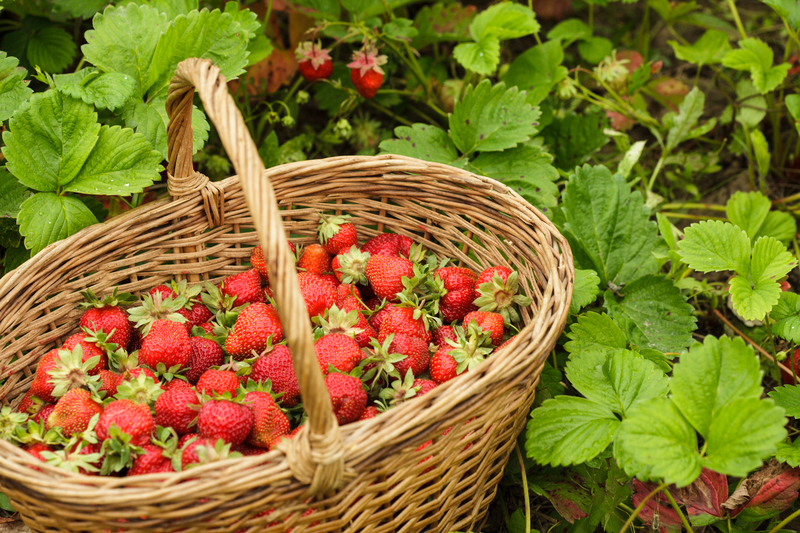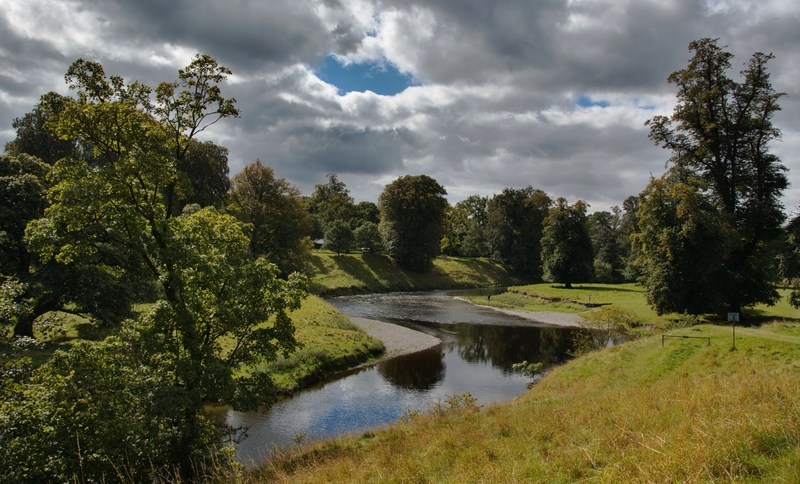Develop a Garden that Kids Will Love and Enjoy
Posted on 16/08/2025
How to Develop a Garden That Kids Will Love and Enjoy
Creating a magical garden for children isn't just about growing plants -- it's about building a space that stimulates their curiosity, senses, and creativity. If you've ever wondered how to develop a garden kids will love and enjoy, you're in the right place! This comprehensive guide covers everything from garden design to plant selection, fun activities, and safety tips, ensuring your little ones adore every moment spent outdoors.

Why Create a Kid-Friendly Garden?
A child-friendly garden isn't only about fun. Research shows that exposure to nature helps children develop stronger immune systems, reduces stress, and improves cognitive and social skills. By developing a garden for kids, you're cultivating more than just plants -- you're nurturing their health, happiness, and love for the environment.
- Encourages active play and exercise
- Fosters creativity and imagination
- Teaches responsibility and patience
- Provides educational opportunities (science, math, art)
- Creates precious family memories
Begin with Smart Garden Planning
Successful children's gardens start with smart planning. Here's a step-by-step approach:
1. Involve Your Kids
The first step in creating a garden that kids will love is to involve them in the planning process. Ask about their favorite colors, plants, or garden features. Allowing children to express their ideas will make them feel ownership and increase their excitement for the final result.
2. Choose the Right Location
Pick a garden spot that's visible from your home and safe for children to access. Ensure adequate sunlight and nearby water sources. Avoid areas close to driveways or hazardous elements.
3. Design with Fun Features
Incorporate elements that appeal to kids' playful nature. Think winding paths, stepping stones, fairy houses, or secret hideouts. You can also use raised beds or container gardens which are easier for small hands to manage.
- Whimsical paths: Use mosaic tiles, stump circles, or colorful gravel.
- Hidden spaces: Create willow tunnels or bean teepees for secret reading or play areas.
- Water play: Add birdbaths, shallow fountains, or mini ponds (with safety precautions).
- Art corners: Set up an outdoor easel or rock painting spot.
Choosing Plants for a Kid-Friendly Garden
Selecting the right plants is essential to develop a garden children will enjoy. Include a mix of sensory, edible, and hardy plants -- but always avoid anything toxic.
Top Sensory Plants
- Lamb's ear (Stachys byzantina): Soft, touchable leaves.
- Lavender: Fragrant, calming scent.
- Spearmint & Lemon balm: Taste and smell appeal.
- Snapdragons & Nasturtiums: Vibrant colors and fun flower shapes.
Edible Plants for Kids
- Cherry tomatoes & strawberries: Tiny hands can easily harvest these bite-sized treats.
- Peas & beans: Fast-growing -- kids can snack straight from the pod.
- Radishes: Quick harvest; perfect for impatient young gardeners.
- Sunflowers: Watching them reach for the sky is magical!
Plants to Avoid
- Oleander, foxglove, lily of the valley: Highly toxic when ingested.
- Plants with thorns or spines: Roses and cacti can cause injuries.
- Allergic plants: Be aware of any family allergies to pollen or specific plants.
Fun Features to Add to Your Children's Garden
Don't limit yourself with plants-- incorporate interactive and playful elements to make your kids' garden a space they truly love!
Garden Play Equipment
- Eco-friendly sandpit or mud kitchen
- Mini-climbing structure or log balance beam
- Swings or hammocks secured between sturdy trees
DIY Projects
- Painted stepping stones
- Wind chimes from shells or recycled materials
- Bug hotels to encourage beneficial insects
- Bird feeders and butterfly puddling stations
- Fairy garden or dinosaur land in a shady corner
Interactive Learning Zones
- Weather station (rain gauge, thermometer)
- Composting bin--teach about recycling kitchen waste
- Mini-greenhouse or cold frame for year-round gardening
- Herb spiral or pizza garden for culinary adventures
Gardening Activities Kids Will Enjoy
Keep kids engaged throughout the seasons with these fun, educational gardening activities for families:
- Seed starting: Get creative with egg cartons or upcycled containers.
- Garden scavenger hunt: List items to spot (ladybug, yellow flower, smooth stone, etc.)
- Garden journaling: Document plant growth, draw favorite flowers, or record weather patterns.
- Plant labeling: Let kids write names or make colorful tags.
- Harvest celebrations: Organize a "garden picnic" with homegrown snacks.
Safety Considerations for Kids' Gardens
While allowing children to explore freely is important, a safe kids' garden is vital. Follow these safety guidelines:
- Fencing: Secure your garden area, especially if near a road or water feature.
- Non-toxic plants and mulch: Double-check all plant choices and avoid cocoa mulch, which is toxic to pets and wildlife.
- Safe tool storage: Provide child-friendly tools, and keep chemicals or sharp implements out of reach.
- Sun protection: Include shaded areas, and teach kids about sun hats and sunscreen.
- Water safety: Cover ponds or water barrels with mesh; never leave young children unsupervised.
Tips for Sustaining a Kid-Friendly Garden
To maintain a garden that kids love year after year, keep these strategies in mind:
- Rotate crops: Try new fruits and veggies each season to sustain interest.
- Keep it simple: Avoid complex layouts; clear paths and open play areas are best.
- Renew activities: Update scavenger hunts, introduce new crafts, and switch up play equipment.
- Invite friends: Turn gardening into a social event with playdates or family gatherings.
The Benefits of a Children's Garden Go Beyond Play
When you develop a garden kids will love and enjoy, you plant lifelong seeds of joy and learning. Beyond the obvious fun, children's gardens teach sustainability, boost mental health, and connect families to the natural world. Even a small patch of earth or a few pots on a balcony can have a huge impact!

Frequently Asked Questions
What are the easiest plants for children to grow?
Sunflowers, radishes, peas, and pansies are perfect for beginners -- they sprout quickly, are low-maintenance, and are visually rewarding.
How do I encourage reluctant kids to garden?
Start with fun, hands-on projects like building a fairy garden or painting rocks. Choose fast-growing plants and engage the senses with taste, touch, and smell. Let kids pick their own seeds!
How much maintenance does a kids' garden require?
Keep it simple! Choose hardy, low-maintenance plants, mulch to reduce weeds, and use raised beds or containers for easy access. Involve kids in simple tasks like watering and harvesting.
Conclusion: Grow a Garden Kids Will Love
Whether your yard is tiny or sprawling, developing a children's garden is a rewarding investment in their growth and wellbeing. Mix playful features with practical plants, encourage exploration, make it safe, and above all -- have fun together. Your vibrant, engaging outdoor space will become a cherished backdrop for discovery, learning, and family connection for years to come.
Start planning today, and watch as your kids fall in love with the joy of gardening!

